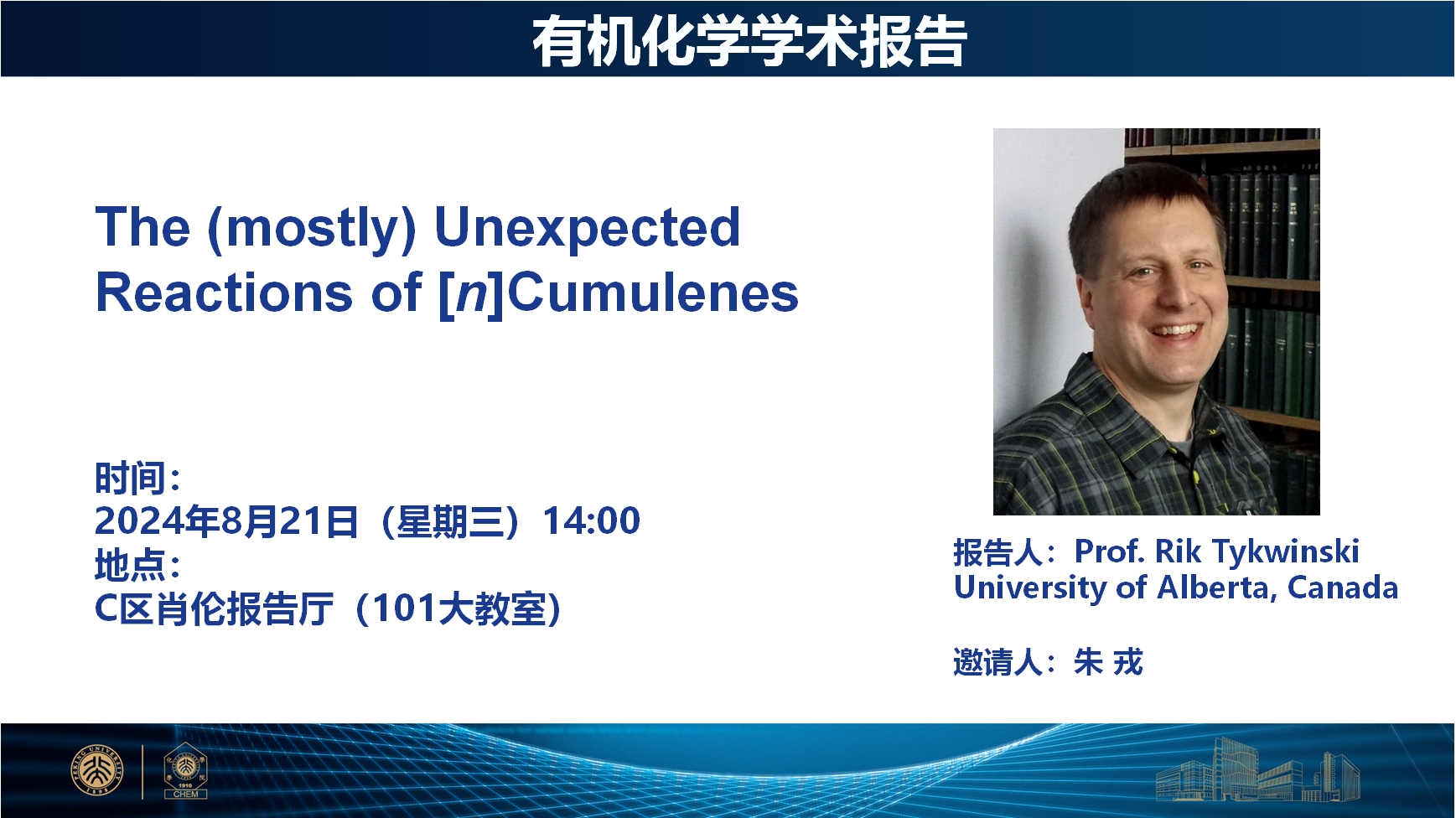
Abstact and Biography
The (mostly) unexpected reactions of [n]cumulenes
Rik R. Tykwinski
Department of Chemistry, University of Alberta, Edmonton, Canada
E-mail: rik.tykwinski@ualberta.ca
Molecules composed of a contiguous sequence of three or more double bonds, [n]cumulenes, are linear molecules with a structure similar to polyynes.1 The pi-electron systems of polyynes and cumulenes are, however, very different. The conjugated framework of polyynes features two orthogonal and degenerate pi-electron systems, while the two orthogonal pi-systems of [n]cumulenes are non-degenerate. Thus, the electronic properties of [n]cumulenes are quite different from those of polyynes. At an infinite length, the effect of endgroups become irrelevant, and [n]cumulenes would provide a possible form of the hypothetical sp-hybridized carbon allotrope carbyne. Noteworthy, bond length alternation (BLA) approaches zero in “cumulenic” carbyne. Polyynes provide the other possible form of carbyne, with a larger BLA at infinite length.
On the road to model carbyne, we have developed syntheses toward both odd and even [n]cumulenes (Figure 1a) that offer model compounds to help to approximate the properties of carbyne, often in comparison to polyynes.2 We, and others, have shown that polyynes bearing sterically encumbered endgroups are stable to lengths of over 40 sp-carbon atoms. Conversely, and perhaps surprisingly, [n]cumulenes with analogous substitution can be chemically unstable at the length of three sp-carbons for even cumulenes ([4]cumulenes) and four sp-carbons for an odd cumulene ([5]cumulenes). Furthermore, even [n]cumulenes are substantially less stable than odd [n]cumulenes. The most common decomposition pathway involves an efficient dimerization reaction to give a [4]radialene as the major product, and these transformation can be observed in solution, the solid-state, and in melts.4 Our recent advances in synthesis of [n]cumulenes and our understanding of their reactivity will be presented and discussed.
References
1. Wendinger, D.; Tykwinski, R. R. Acc. Chem. Res. 2017, 50, 1468.
2. Bühringer, M. U.; Padberg, K.; Phleps, M. D.; Maid, H.; Placht, C; Neiss, C.; Ferguson, M. J.; Görling, A.; Tykwinski, R. R. Angew. Chem. Int. Ed. 2018, 57, 8321.
3. Gao, Y.; Tykwinski, R. R. Acc. Chem. Res. 2022, 55, 3616-3630.
4. Johnson, M. A.; Meckes, J. A.; Zhou, Z.; Kuwatani, Y.; Ferguson, M. J.; Iyoda, M.; Petrukhina, M. A.; Tykwinski, R. R. J. Phys. Org. Chem. 2023, 36, e4454.